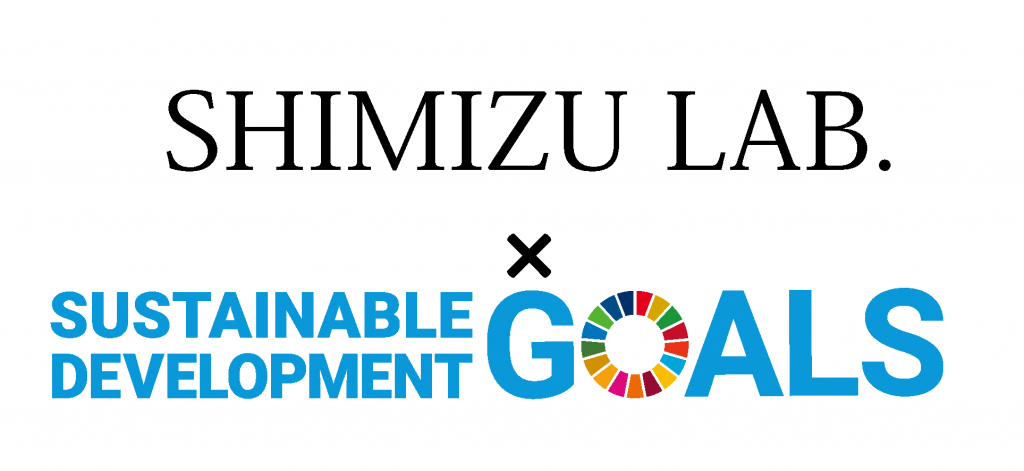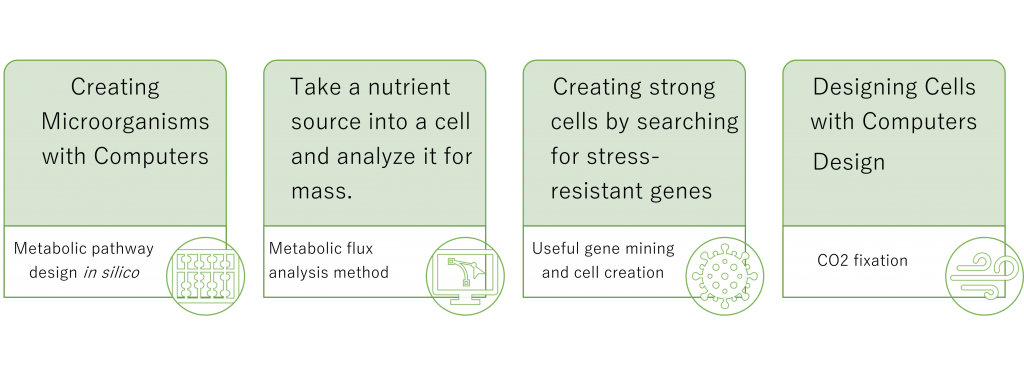We will achieve the SDGs by analyzing the “metabolic” reactions in cells.
Use of reusable organic resources derived from plants and animals.
Marine biomass has the potential to overcome the future depletion of water resources. Our goal is to design in silico metabolic changes in microalgae and to derive strategies for metabolic modification, such as increasing biomass production and photosynthetic capacity.
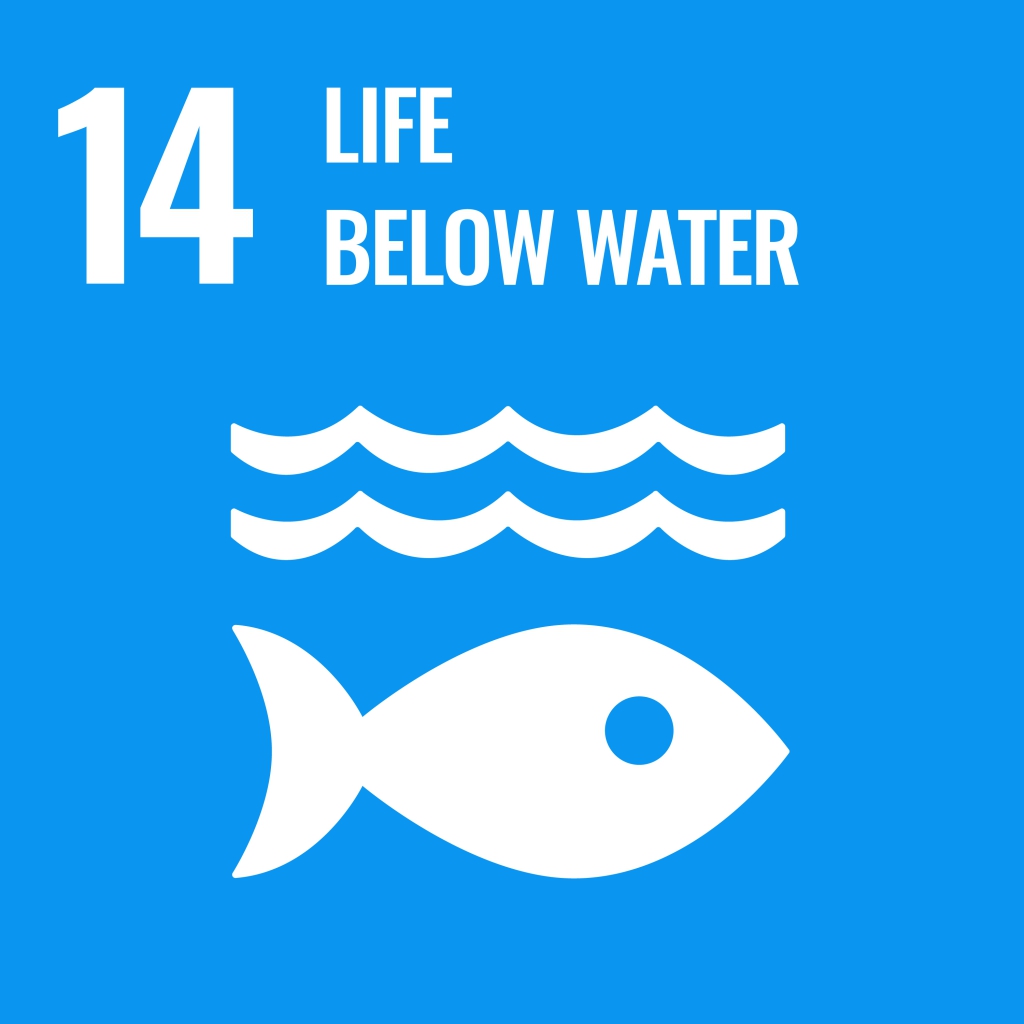
- What is biomass ?
-
It is renewable biological resources which is from, for example, trees, seaweeds, food wastes and planktons.
- What is in silico ?
-
In silico refers to experiments using computers, which can predict and analyze the results of actual experiments and is expected to contribute to the validation of general scientific hypotheses and to events that are difficult to measure with current technology.
 Prof.SHIMIZU
Prof.SHIMIZUWe will contribute to science and engineering by developing new bioproduction systems to reduce greenhouse gas and produce biofuels.
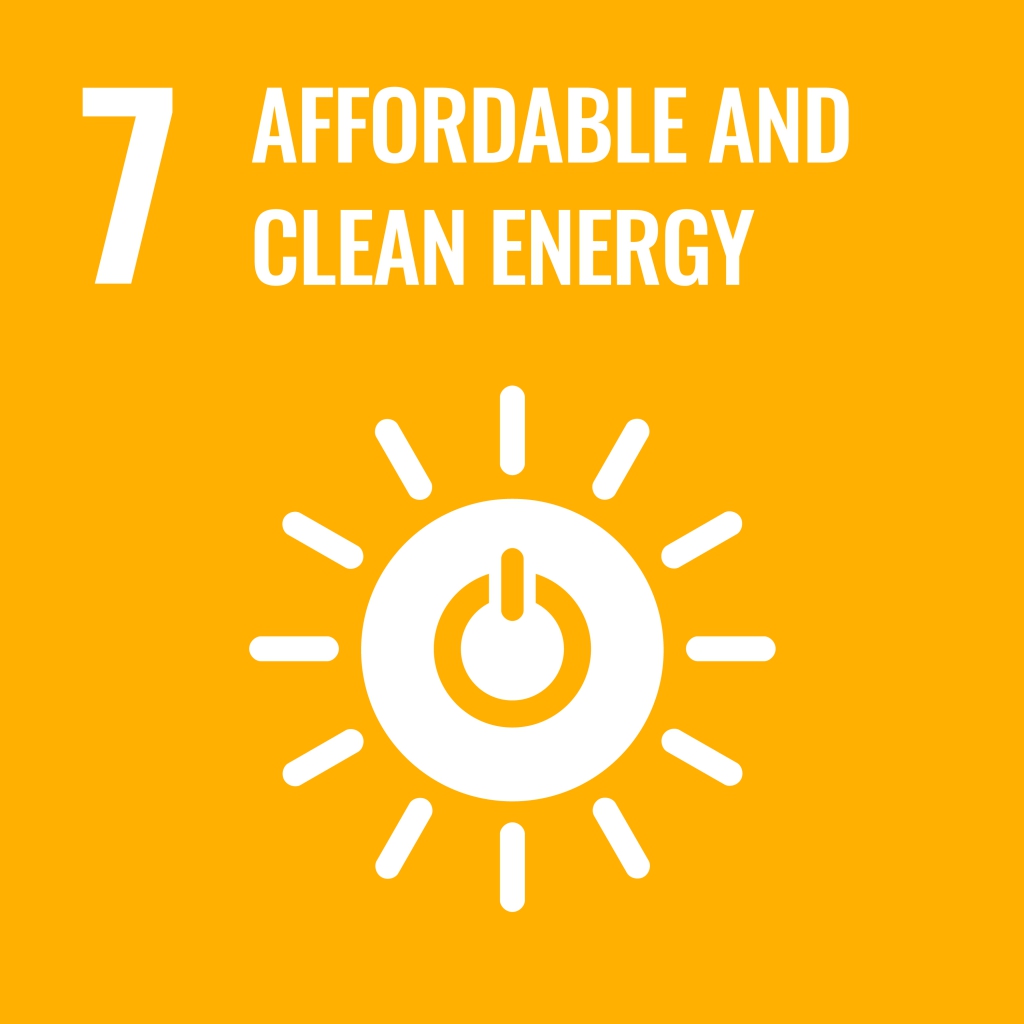

“Metabolic Flux Analysis” aims to optimize production of chemicals and fuels using microorganisms.
We have developed a 13C-metabolic flux analysis method to study the fundamental systems of life. This method visualizes metabolic flow on reaction networks in cells and gives us insight for optimizing the networks in microorganisms.
- What is metabolic flux analysis ?
-
It is analysis methods for investigating the apparent metabolic flow based on metabolomic data in cells. Comparison of metabolic flow in the different conditions and species gives us insight into the influential factor for their metabolic reactions.
- What is 13C- metabolic flux analysis ?
-
It is one of the metabolic flux analysis methods and uses stable isotope labeled carbon source to track the metabolic activities in cells.



The 13C-metabolic analysis provides information on the metabolic state of the cells, which gives us hints on how to design their metabolic pathways so that microorganisms can efficiently produce the target chemical compounds.
Searching for genes in microorganisms that produce useful compounds and developing cells that work robustly
We are using genetic engineering techniques to tune microorganism’s functions, which direct to produce various chemicals with to eco-friendly. In particular, the organisms are rewired their metabolic networks for efficient chemical productions and are added stress resistance functions to prevent their growth rate depression.
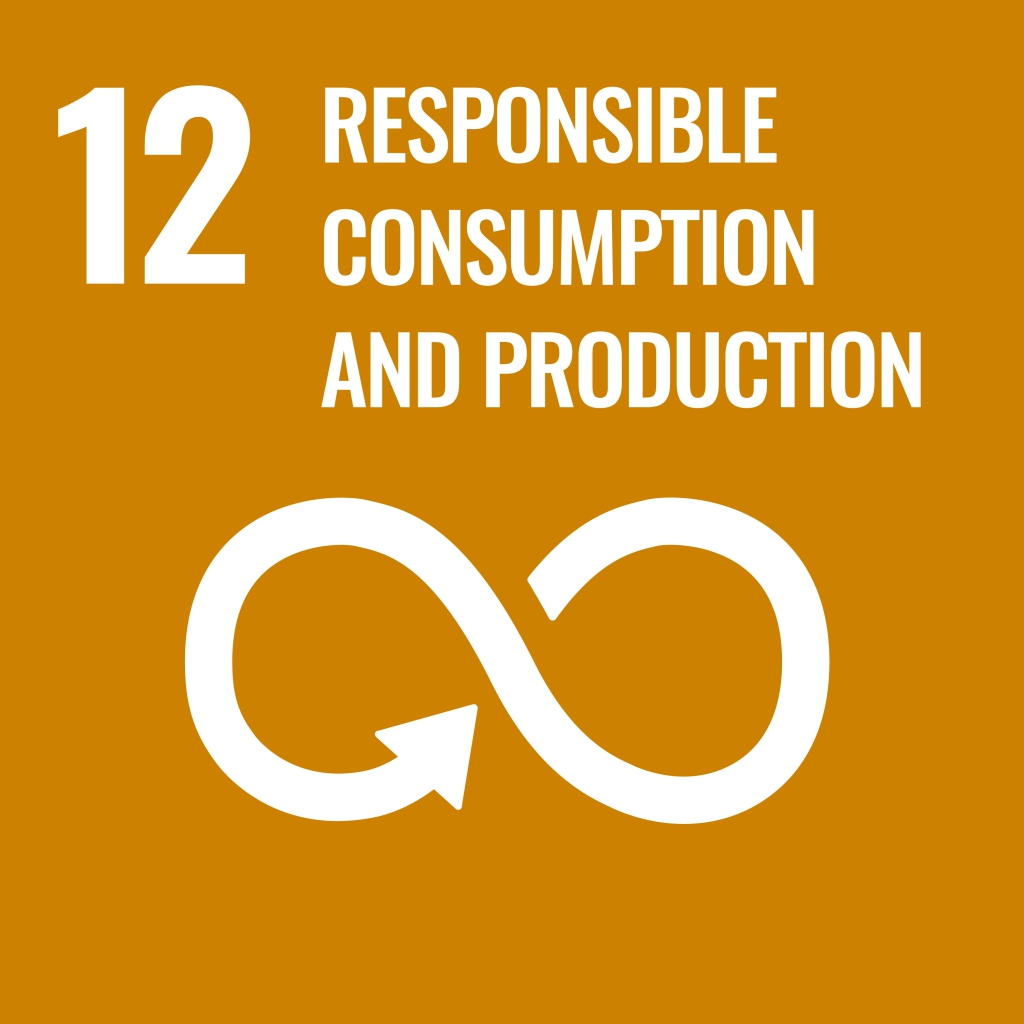

- What is useful compounds ?
-
It has been highly desired to produce various compounds including chemicals, fuels, medicines, and foods using bio-processes. We’ve tackled producing them efficiently with genetically engineered microorganisms for future ecological society.



The fermentation process by microorganisms can create compounds with complex structures that are difficult to produce by regular organic synthesis.


Reduce emissions by fixing carbon dioxide (CO2) contained in the atmosphere and exhaust gases.
Photosynthesis, which is necessary for carbon fixation, is the process by which microorganisms use the energy of light to break down water, produce oxygen, and fix CO2 into organic compounds. Photosynthesis, which is necessary for carbon fixation, is how microorganisms use light energy to break down water, produce oxygen, and fix CO2 into organic matter. We are developing a method to photosynthesize these microorganisms by using a biological improvement method.



We engineer cyanobacteria, one of the bacteria that perform photosynthesis, to design cells that actively perform photosynthesis. This research will lead to the reduction of carbon dioxide, which contributes to global warming.

